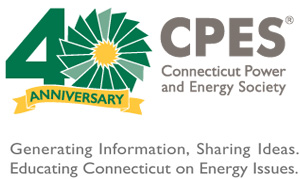This update features policy, regulatory, legislative, and regional developments in Connecticut and New England. The policy updates are compiled by the CPES New Energy Professionals Team. If you are interested in learning more about the New Energy Professionals, the Policy Committee, or if you have ideas for future policy updates, we would welcome your input and feedback. Please send comments to Kathryn Dube, CPES Executive Director, via email: kdube@ctpower.org.
This week’s feature:
- Integrating Markets and Public Policy (IMAPP) Discussions Continue on Potential Market Rule Changes
REGIONAL AND INDUSTRY DEVELOPMENTS
Integrating Markets and Public Policy (IMAPP) Discussions Continue
On May 17, 2017, market participants, state regulators, and other stakeholders continued discussions on potential market rule changes to integrate the region’s wholesale electricity markets with the public policy goals of the New England states (the IMAPP initiative). The meeting featured a presentation by ISO New England on a proposed approach that could be implemented in the near term. Conceptually, the ISO’s approach seeks to coordinate the entry of new subsidized clean energy resources with the retirement of existing capacity resources through the Forward Capacity Market (FCM). By doing so, the FCM can accommodate the entry of significant subsidized resources over time while maintaining competitively-based capacity prices for non-subsidized resources. The ISO’s approach is being referred to as Competitive Auctions with Subsidized Policy Resources or “CASPR.” A detailed discussion paper and highlights from the CASPR design approach are available on the ISO New England website.
For additional information, visit NEPOOL’s Integrating Markets and Public Policy website.
Information about the Energy and Technology Committee, including committee meetings and public hearings, is available at: https://www.cga.ct.gov/et/
The Energy and Technology Committee’s JF deadline was March 23, 2017. The list of bills reported out of the Energy and Technology Committee is available here and additional information about the status of these bills is available at this link.
CPES does not take a position on these legislative proposals; this is provided for informational purposes only to CPES members.

